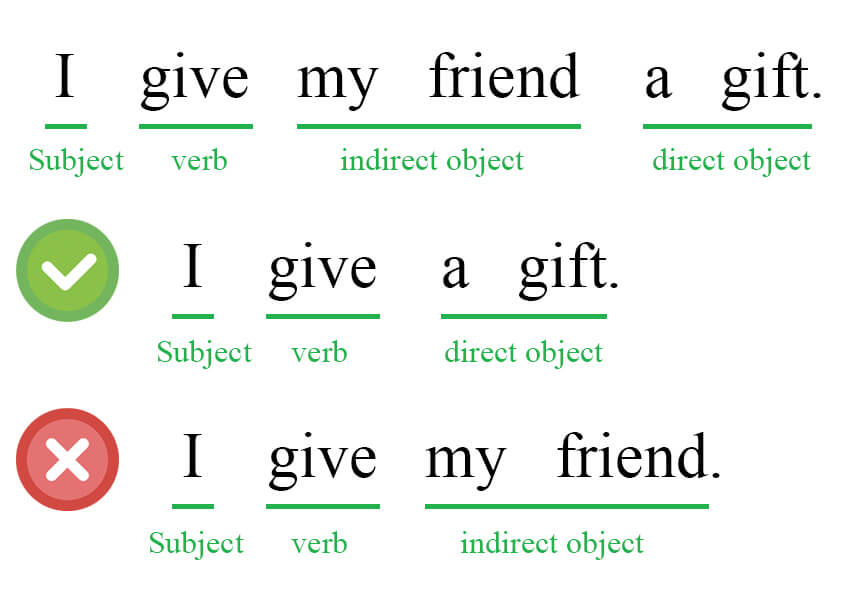Direct Object VS Indirect Object
- A direct object is the receiver of the action. It's usually a noun or a pronoun.
- A direct object answers the questions "what?" or "whom?"
- An indirect object is the secondary receiver of the action. It comes before the direct object.
- An indirect object answers the questions "to whom?" or "for whom?"
- You cannot just have an indirect object without a direct object.
What are Direct Objects?
Direct objects are the receiver of the action in a sentence. They answer the question "what?" or "whom?". They come after a verb.
Examples:
-
Amy reads books.
"reads" = verb, "books" = direct object.
-
George loves her.
"loves" = verb, "her" = direct object.
What are Indirect Objects?
Indirect objects are like the secondary receivers in a sentence. They answer the question "To whom?" or "For whom?". Indirect objects always come before the direct object.
Examples:
-
I give my friend a gift.
"give" = verb, "my friend" = indirect object, "a gift" = direct object.
-
My father sends my mother a birthday card every year.
"sends" = verb, "my mother" = indirect object, "a birthday card" = direct object.
Note: You can have only a direct object. However, you CANNOT have only an indirect object.
Examples:
-
I give a gift.
There is no indirect object. (OK)
-
I give my friend.
There is no direct object. (Not OK)
Practice this topic with the AI English Tutor
AI English Tutor will teach you the grammar and practice it with you in a conversation format. Plus, 100+ practice questions on this topic to cement your understanding.
Try ALULA for free on your phone or tablet










Do you have any questions about this lesson? Ask in the comment section, below.